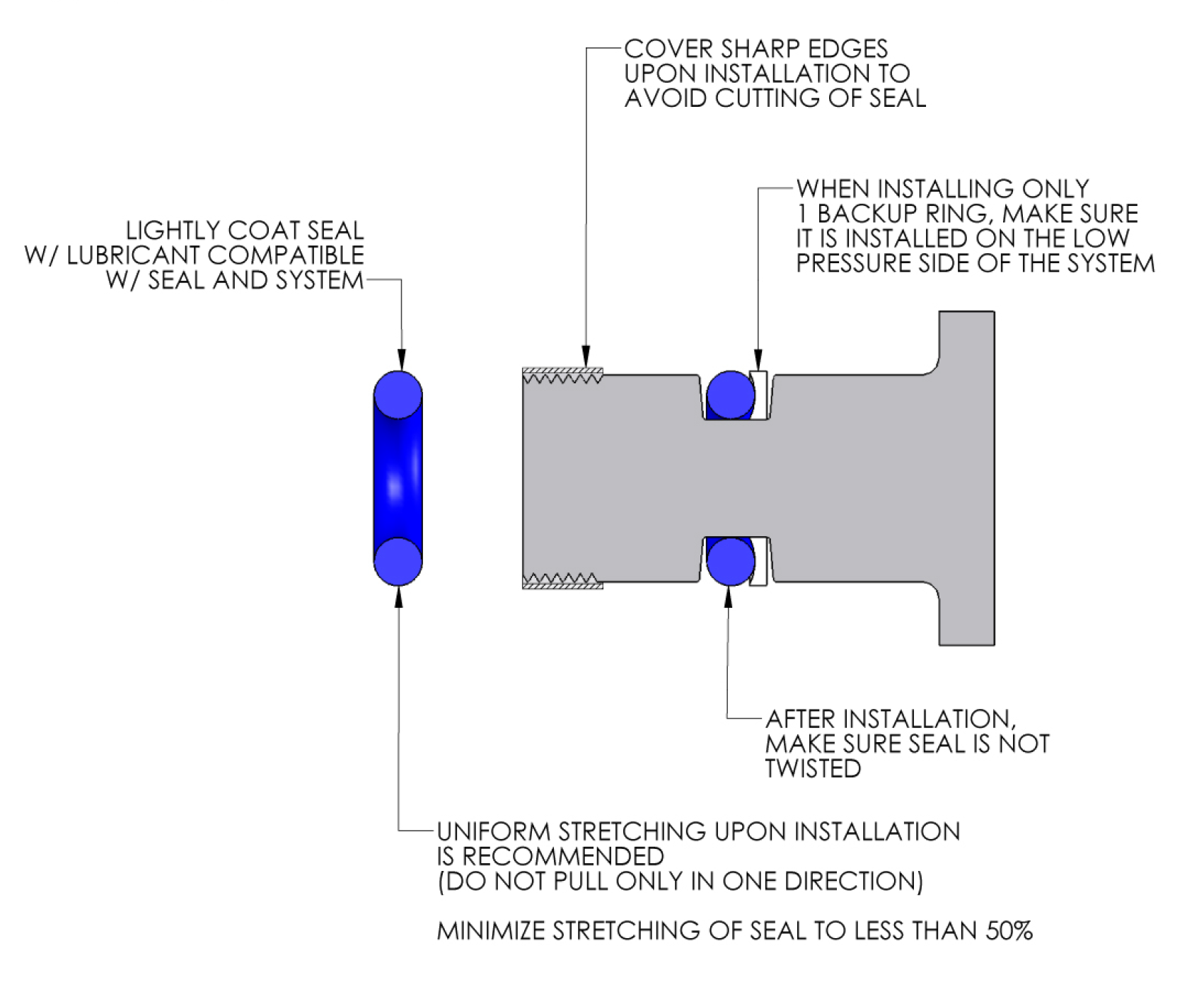| Brand: | OEM |
| Model: | EP(White)11.5X1.7WA@RUG(50) |
ORING EPDM O-ring White
ID 11.50mm X CS 1.70mm
Material : EPDM 70 shore (white)
Additional Information
EPDM – also known as ethylene propylene diene monomer – is an extremely versatile material used in a variety of applications, from automotive products to HVAC parts. This type of rubber also acts as a less expensive alternative to silicone, as it can last for long periods of time with proper use. As such, EPDM can save you time and money depending on the needs of your application.
EPDM Properties
- Common Name: EPDM
- ASTM D-2000 Classification: CA
- Chemical Definition: Ethylene Propylene Diene Monomer
- Temperature Range
- Low Temperature Usage:-20° to -60° F | -29⁰C to -51⁰C
- High Temperature Usage: Up to 350° F | Up to 177⁰C
- Tensile Strength
- Tensile Range: 500-2500 P.S.I.
- Elongation: 600% Maximum
- Durometer (Hardness) – Range: 30-90 Shore A
- Resistances
- Aging Weather - Sunlight: Excellent
- Abrasion Resistance: Good
- Tear Resistance: Fair
- Solvent Resistance: Poor
- Oil Resistance: Poor
- General Characteristics
- Adhesion to Metals: Fair to Good
- Solvent Resistance: Poor
- Compression Set: Good
EPDM Benefits and Advantages
- Resistance to UV exposure, ozone, aging, weathering, and many chemicals – great for outdoor applications
- Stability in high and low temperatures – a general purpose EPDM material can be used in an environment where the temperature range is from -20⁰F to +350⁰F (-29⁰C to 177⁰C).
- Low electrical conductivity
- Steam and water resistant
- Can be fabricated in a variety of ways, which includes custom molded and extruded parts
- Long-term part lifespan allows for fewer replacement parts, saving money in the long run
Primary Usage
O-Rings and rubber seals are generally used for:
- Applications that require resistance to OIL
- Applications that are required to work in low temperatures (-0°C)
- High performance Fuel systems that requires strictly no leakage
- Aircrafts
- Marine Ships
- F1 Cars
- General Industrial Use
Tips for installation of an O-ring
O-rings need to be installed properly for a perfect fit and sealing. It is important that you install the O-ring in a prescribed manner to ensure your application continues to function properly. You will also ensure you increase the life of the application.
So how do you install an O-ring?
The process of installing an O-ring into a male gland is an intricate affair that should be carefully undertaken. Glide it along the shaft so as it reaches the gland. At that point, it should easily snap into place. Simple as it might sound, a number of steps will ensure that the O-ring doesn’t get damaged.
If you want to install an O-ring correctly and within a short time, here are steps to follow:
- Covering and lubricating the threading of the shaft
The threading of the shaft has the potential of tearing the rubber seal. Cover the threads using a masking tape and then lubricate them to allow for easy passage of the O-ring. The aim is to have the O-ring slide through without getting torn.
- Don’t force it over sharp corners
That’s a tip that will save you the stress of a torn O-ring. In fact, running the O-ring over jagged or sharp objects could get it torn. You may not be able to notice some of these tears. That’s why you should ensure you prevent them from occurring in the first place.
- Even stretching
You will have to stretch the O-ring over the shaft. Ensure you do it evenly. Pulling from one side is a no-no. If anything, you should stretch the O-ring as little as possible. You will not just get a tighter grip but added security too.
- Don’t roll it down the shaft
Instead of rolling the O-ring down the shaft, slide it. If you spiral wind or roll an O-ring, it cannot be properly installed. It will also not function optimally and can even end up being damaged. If you have a lubricant, apply it on the O-ring and you will keep it rolling.
- Finishing it off
Place the female component in a manner that allows its radius to go around the corner. This should be done when you are finalizing the installation process. Ensure the lead of this component is inside the chamfer. This is how you will be able to guarantee the safety of the O-ring.
For O-rings to perform optimally, they have to be properly installed. It doesn’t just provide secure sealing but also increases the service life of the component together with the application. Don’t compromise on this process.
Installation Guide

| Units | Discount | Unit Price |
|---|---|---|
| 1 | - | S$ 7.80 |